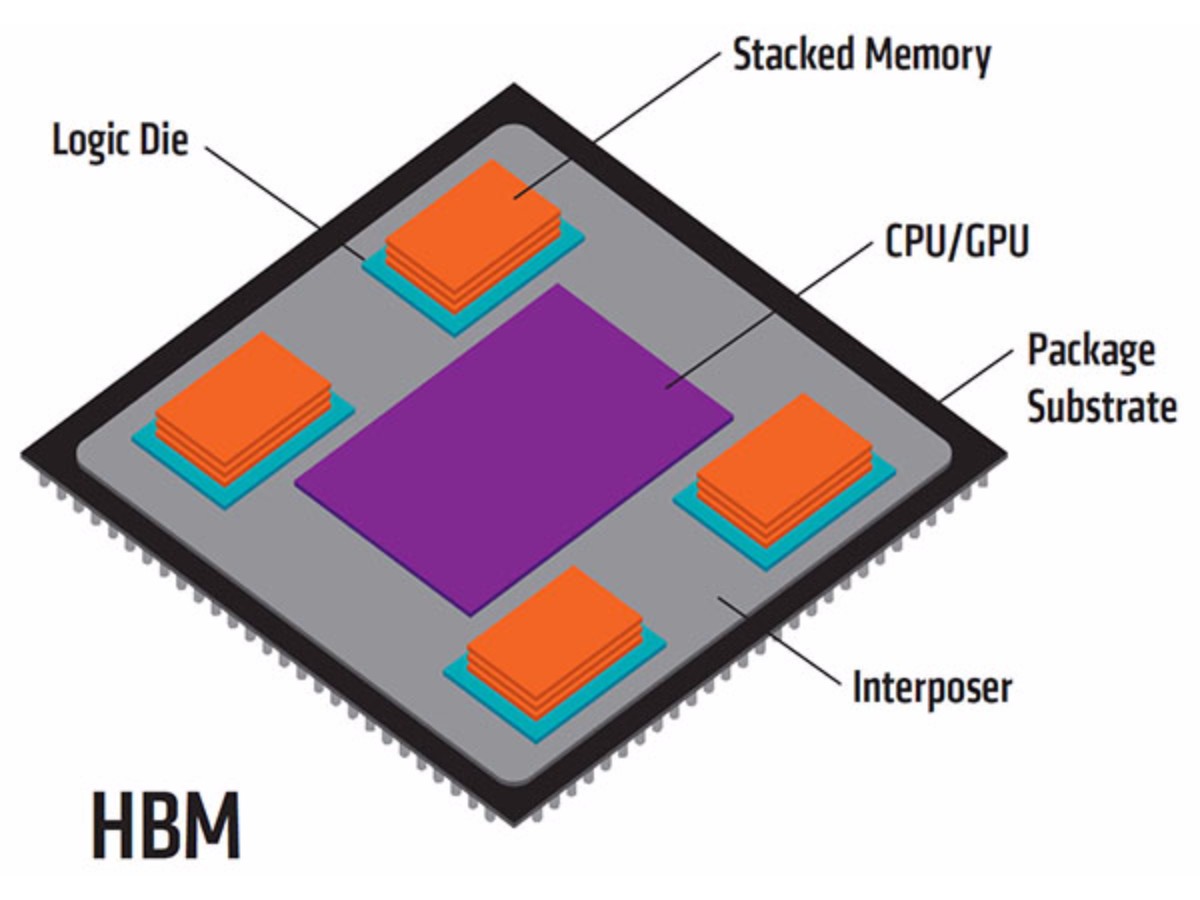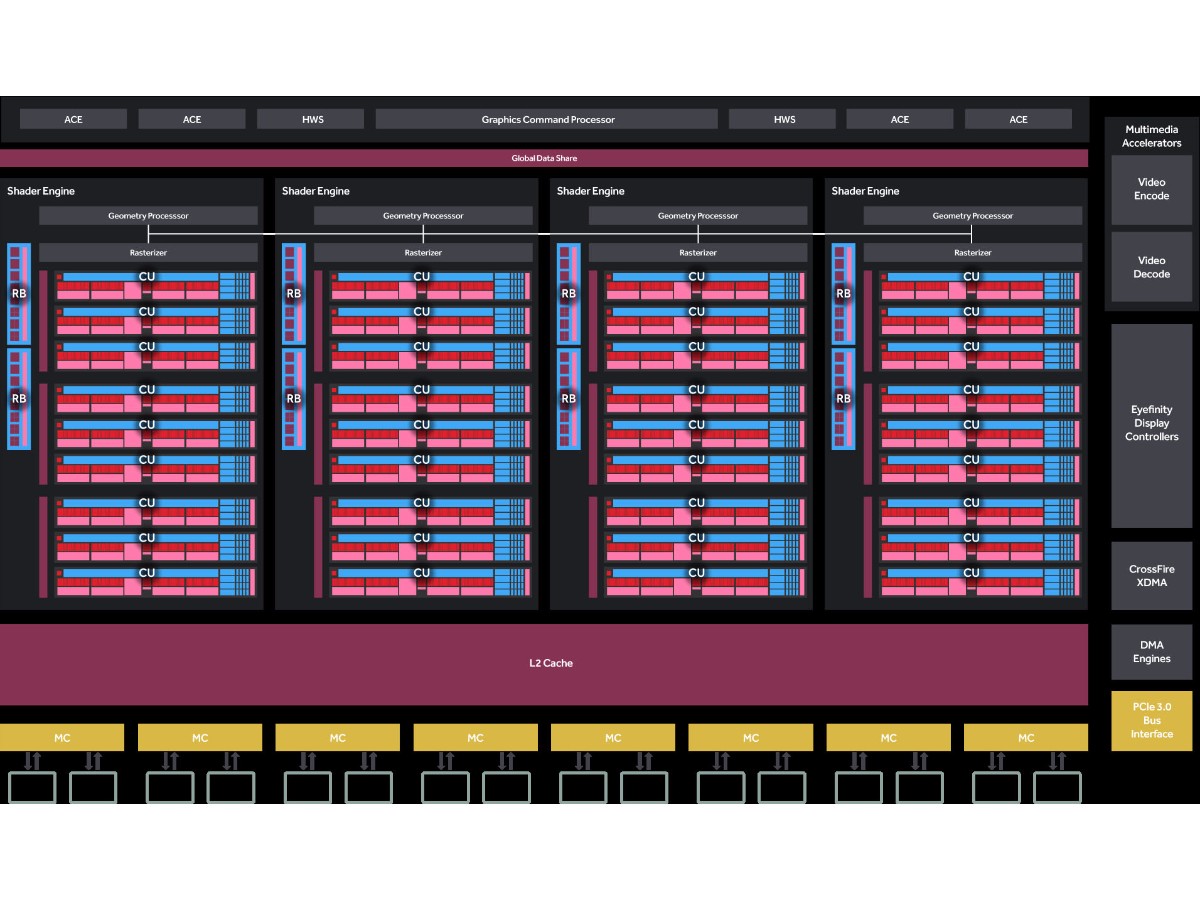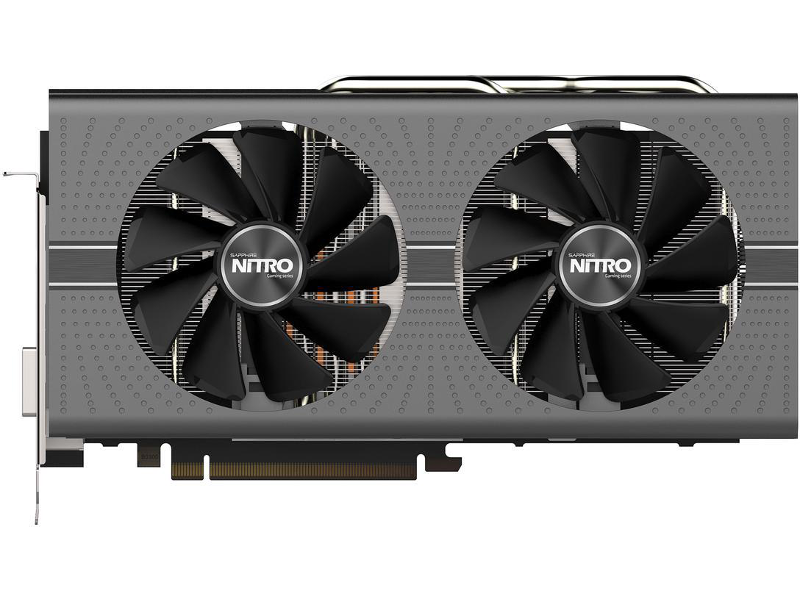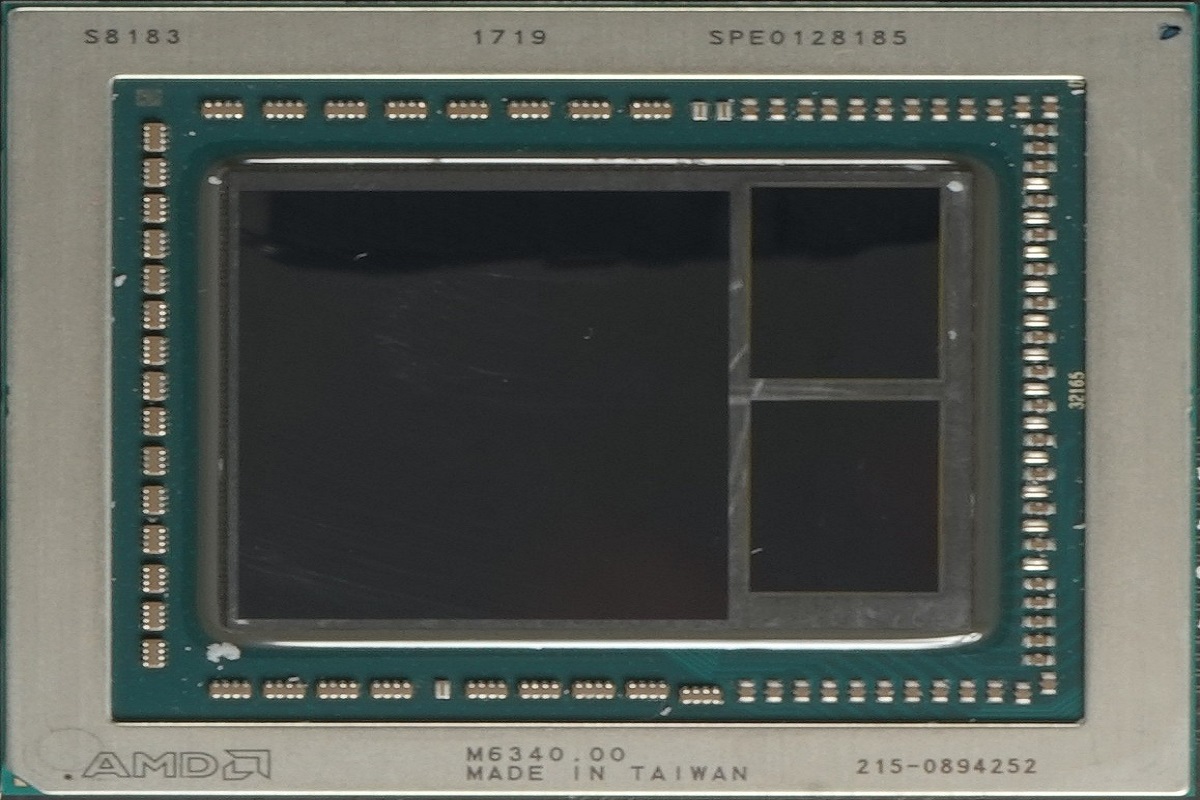The 30 Year History of AMD Graphics, In Pictures
AMD Radeon R9 Fury X (2015)
AMD's next flagship also used an updated implementation of the GCN architecture. Its Radeon R9 Fury X sported a Fiji GPU with 8.9 billion transistors, enabling 4096 Stream processors, 256 TMUs, and 64 ROPs. More notable than the massive core, however, was AMD's pioneering introduction of High-Bandwidth Memory. Fiji is fed by 4GB of HBM capable of 512 GB/s over a 4096-bit bus.
Stuck at 28 nm manufacturing and faced with a big, hot GPU, AMD went with liquid cooling to make the Fury X smaller and quieter than would otherwise be possible. The Radeon R9 Fury X outperformed Nvidia's GeForce GTX 980, but traded blows with its GeForce GTX 980 Ti. As a result, determining last generation's king often came down to game selection and quality settings.
AMD Radeon RX 480 (2016)
AMD's Radeon RX 480 is somewhat unique in that it was not designed to be the company's fastest graphics card. Instead, it was built to be an efficient mid-range board. You can expect higher-end solutions based on the same Polaris architecture in the months to come.
The Radeon RX 480 has 2304 Stream processors, 144 TMUs, and 32 ROPs connected to either 4 or 8GB of GDDR5 on a 256-bit bus. The core operates at a base clock rate of 1120 MHz and can accelerate up to 1266 MHz. The GPU also boasts a large 2MB L2 cache to reduce its dependency on the GDDR5. Officially, the RX 480 is rated for a 150 W TDP. And although it isn't as fast as Nvidia's Pascal-based cards, it does fare well against the GeForce GTX 970.
AMD also produced lower end RX 470 and RX 460 models to handle the budget market. These GPUs use the same architecture as the RX 480, but with fewer cores and reduced memory support.
MORE: Best Deals
MORE: Best Graphics Cards
Get Tom's Hardware's best news and in-depth reviews, straight to your inbox.
AMD Radeon RX 580 (2017)
In April, 2017, AMD introduced the RX 500 series. Or rather it re-introduced the RX 400 series under a new name. These GPUs are nearly identical to their RX 400-series predecessors. The RX 500 series GPUs, however, feature significant bumps in clock speed and support higher voltage limits. AMD didn't create a reference design for the RX 580, but models produced by OEMs are typically clocked between 100-200MHz above the RX 480. The company also released an RX 570 and plans to release RX 560 and RX 550 models that also have increased clock speeds.
AMD Radeon Vega RX (2017)
AMD designed Vega as a high-performance GPU architecture to run concurrently with Polaris. While the pixel shaders used in Vega and Polaris are relatively similar to each other, Vega has the clear advantage thanks to a significant increase in the number of shaders, plus faster memory. AMD implemented HBM2 memory with Vega, and has announced consumer GPUs with 8GB of GBM2 with a peak bandwidth of 484 GB/s over a 4096-bit bus. The workstation oriented Vega Frontier Edition pushes this up to 16GB of HBM2. AMD also reworked the cache inside Vega to increase bandwidth throughout the core. The render back-end is now a client of the L2 cache, which has increased to 4MB.
Vega also has access to a wide number of new features and processing elements. There is a new programmable geometry pipeline that can render 17 primitives per clock. Vega sports a Next-Generation Compute Unit (NCU), equipped with 64 shaders, which is designed to accelerate game performance.
Vega 64 will compete with Nvidia's GeForce GTX 1080, while a lower-end variant called Vega 56 will do battle with the GTX 1070.



